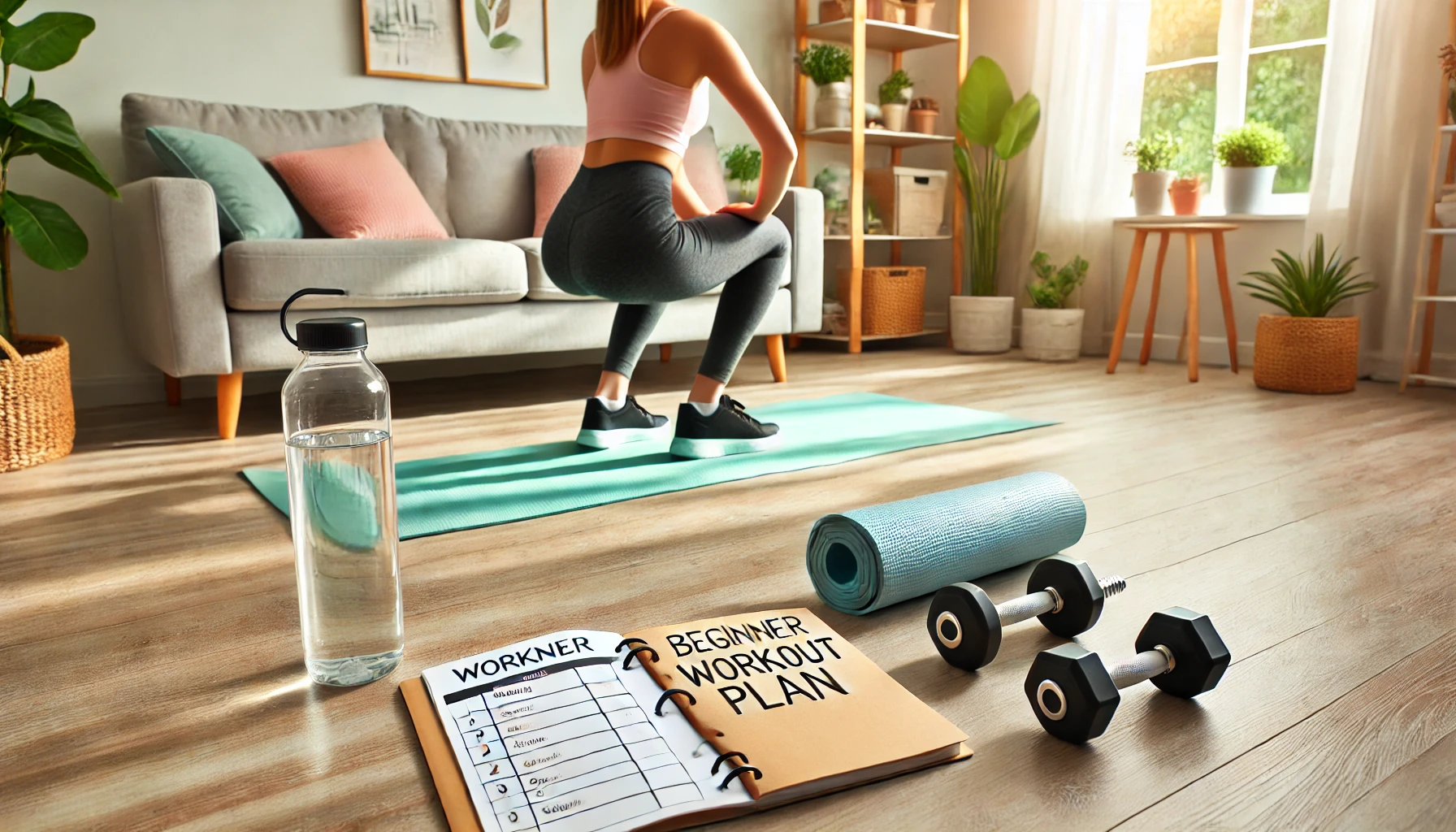Starting an exercise routine can feel overwhelming, but with the right approach, anyone can build a consistent and effective workout habit. Whether you want to lose weight, gain strength, or improve overall health, this guide will help you take the first step.
1. Set Realistic Goals
Before starting, determine what you want to achieve. Your goals will guide your workout plan.
Common fitness goals:
- Weight loss – Focus on cardio and strength training
- Muscle building – Prioritize resistance exercises
- Increased flexibility – Include yoga and stretching
- Better endurance – Engage in running, swimming, or cycling
Setting SMART goals (Specific, Measurable, Achievable, Relevant, and Time-bound) will keep you motivated.
2. Choose an Activity You Enjoy
Exercise doesn’t have to be boring! Find a workout that you genuinely like to make it easier to stay consistent.
Beginner-friendly exercises:
- Walking or jogging in nature
- Dancing or Zumba
- Swimming or cycling
- Bodyweight exercises (squats, lunges, push-ups)
Trying different activities helps you discover what works best for you.
3. Start Slow and Progress Gradually
Avoid overexertion by easing into your routine. Pushing too hard too soon can lead to injuries.
Beginner workout plan:
- Week 1-2: Light cardio (15–20 minutes) + stretching
- Week 3-4: Introduce bodyweight exercises (squats, push-ups)
- Week 5+: Gradually increase intensity and duration
Listen to your body and increase the challenge at your own pace.
4. Warm Up and Cool Down
Warming up prepares your muscles and prevents injuries, while cooling down aids recovery.
Warm-up (5-10 minutes):
- Light jogging or jumping jacks
- Dynamic stretching (arm circles, leg swings)
Cool-down (5-10 minutes):
- Gentle stretching (hamstring stretch, shoulder stretch)
- Deep breathing exercises
Skipping warm-ups and cool-downs can increase muscle soreness and stiffness.
5. Focus on Proper Form
Using correct form prevents injuries and ensures maximum benefits. If you’re unsure, consider:
- Watching online tutorials from certified trainers
- Using a mirror to check posture
- Asking for guidance at a gym
Quality is more important than quantity when it comes to exercise.
6. Stay Consistent but Flexible
Consistency is key, but life can be unpredictable. If you miss a workout, don’t be discouraged—just get back on track.
Tips for staying consistent:
- Schedule workouts like appointments
- Start with 3-4 sessions per week
- Keep workouts short (20-30 minutes) to avoid burnout
Small efforts over time lead to big results.
7. Listen to Your Body
Your body will tell you when to push forward or take a break. Watch for:
- Good signs: Increased energy, better mood, improved endurance
- Warning signs: Persistent pain, extreme fatigue, dizziness
Rest days are essential for muscle recovery and preventing injuries.
8. Stay Hydrated and Eat Well
Nutrition plays a big role in fitness success.
Pre-workout fuel:
- Banana with peanut butter
- Greek yogurt with honey
- Whole-grain toast with avocado
Post-workout recovery foods:
- Lean protein (chicken, fish, tofu)
- Complex carbs (brown rice, sweet potatoes)
- Hydrating fruits (watermelon, oranges)
Eating well ensures you have enough energy for workouts.
9. Track Your Progress
Monitoring progress keeps you motivated and helps you see improvements over time.
Ways to track fitness progress:
- Keep a workout journal
- Take before-and-after photos
- Note strength gains (e.g., more push-ups or heavier weights)
Seeing progress will keep you motivated to continue.
10. Make Exercise a Lifestyle
Fitness should be a long-term habit, not a temporary fix. Focus on enjoying the process rather than just the results.
Ways to integrate exercise into daily life:
- Walk or bike instead of driving
- Take the stairs instead of the elevator
- Do quick workouts at home during TV breaks
When fitness becomes part of your routine, it feels natural and enjoyable.
Final Thoughts: Take the First Step Today
Starting an exercise routine doesn’t have to be intimidating. By setting realistic goals, choosing fun activities, and progressing at your own pace, you’ll build a lasting fitness habit.
Remember: Every small effort adds up. The most important thing is to start and keep going!






